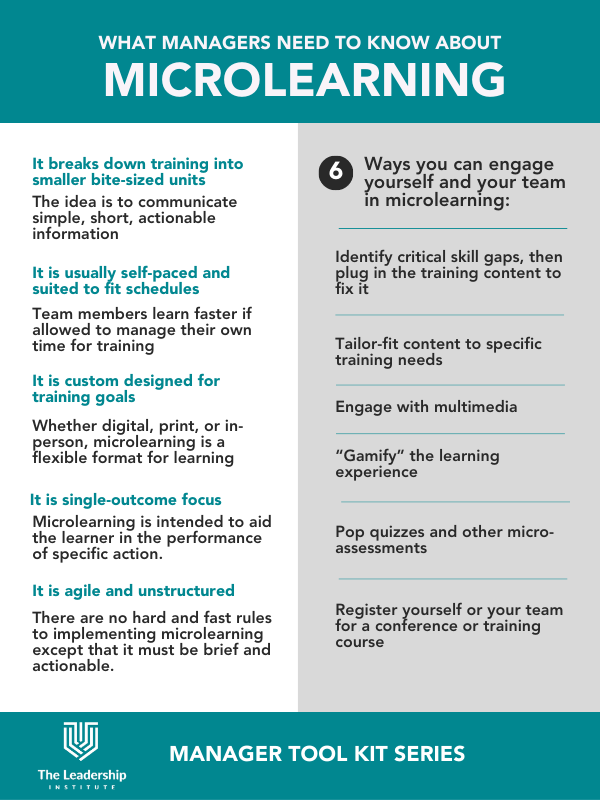Winning the fight for talent
All over the world, across all industries surveyed by Gallup, only 15% of employees, on average, are actively engaged in their jobs. Consider the impact of this alarming statistic – 85% of staff are not adding value to their employers and draining company resources.
Low engagement leads to high employee turnover and with the falling supply of quality talent worldwide, more businesses are in danger of losing capacity to remain productive and competitive.
As a people manager, you play a critical role in winning this fight for talent. You need to make your team’s learning and development a top priority to successfully drive employee engagement, retention and productivity.
A call for managers to shake up L&D
You are in charge of people whose job it is to think, communicate, design, disseminate, create, innovate, and so on. Your operation runs on your team’s brain power and your job as a manager is to keep their minds fully engaged.
But the manager is not typically involved in L&D, you say. But you understand what your team is capable of and what the business needs from them more than anybody else. It only makes practical sense to take ownership of their learning and development.
Managers in the knowledge economy
How do you squeeze in the hours, energy and skill to train your staff with your demanding daily grind?
The trick is in identifying the easiest and quickest pathway to learning. You also need to consider building your team’s foundational knowledge throughout their career while steadily stacking up new skills along the way. This is ultimately a call for managers to revolutionise what we know as professional development by stepping up to become educators.
Welcome to Microlearning — the new way of delivering rapid, high-impact learning for your team through short bursts of training.
What IS Microlearning
Simply put, microlearning is an approach to learning that focuses on skill development by engaging in small units of learning. It can be characterised by the following:
1. It breaks down training into smaller bite-sized units
The idea is to communicate simple, short, actionable information
2. It is usually self-paced and suited to fit schedules
Team members learn faster if allowed to manage their own time for training
3. It is custom designed for training goals
Whether digital, print, or in-person, microlearning is a flexible format for learning
4. It is single-outcome focus
Microlearning is intended to aid the learner in the performance of specific action.
5. It is agile and unstructured
There are no hard and fast rules to implementing microlearning except that it must be brief and actionable.
What is NOT Microlearning
1. It is not for learning complex concepts
Broad and multi-layered subjects need to be broken into simpler parts or topline bullets to be considered microlearning.
2. It is not for gaining deep expertise
The goal of microlearning is to impart simple information quickly, and not for in-depth study. The goal is to quickly learn a new skill, not gain deep understanding of a concept.
So, as a leader, how can you engage yourself and your team in microlearning?
1. First, identify critical skill gaps, then plug in the training content to fix it.
The onus is upon the manager to help team members stack up on skills and be excellent at their jobs. Microlearning allows managers to implement a learning plan with speed and urgency. A quick Google, YouTube or Linkedin Learning search will usually help you find the right training material to quickly mitigate a skill gap.
2. Tailor-fit content to specific training needs.
What most Learning and Development experts get wrong is that they dump a one-size-fits-all approach to training. Microlearning allows managers to quickly put together highly relevant and useful content for their teams’ individual training needs.
3. Engage with multimedia.
Don’t just paste whole blocks of text in an email and call it microlearning. In this era of short attention spans, the multimedia format – from a 2-minute slideshow, a 15-minute YouTube tutorial, a 1-hour podcast or 3 hour interactive workshop – is the fastest and most engaging way to learn new material.
4. “Gamify” the learning experience.
In case your online learning platform does not support gamification, get creative through some analogue fun and games, i.e. flashcards, boardgames, etc., that’s guaranteed to make the lessons stick.
5. Pop quizzes and other micro-assessments
Reinforce the lessons of microlearning with, you guessed it – micro assessments! A pop quiz or a 1-minute verbal summary will help you assess how your learners are retaining and using all the new information.
6. Register yourself or your team for a conference or training course
Perhaps the easiest way to engage in microlearning is to attend an event or workshop. Most training course facilitators are experts at delivering content in engaging, interactive ways, and large conferences feature experts at the top of their field delivering 40-60 minute sessions on hyper-specific topics.

It’s never too early to start a microlearning plan for your team! View our range of training and events, or get in touch with us directly to learn know more about the long-term business benefits of microlearning.



